Cotopaxi volcano is an unforgettable sight—a near-perfect snow-capped cone reaching 5,897 meters above sea level. It’s Ecuador’s most famous peak and the second tallest mountain in the country, making it a prime destination for generations of climbers and adventurers like us. My wife and I were amazed by Cotopaxi’s dramatic presence and the opportunities it offers, from climbing to wildlife spotting in the beautiful surroundings.

Don’t miss the opportunity to visit Cotopaxi on your Ecuador adventure! This iconic peak offers a thrilling experience, but be prepared for the high altitude. Even though we had been taking ChlorOxygen before the trip—which helped us in Quito—Cotopaxi is a whole new challenge, as it sits at an elevation of around 5,000 meters.

Thanks to ChlorOxygen, we managed to finish the hike, a feat that felt nearly impossible without it. This guide will walk you through all the essentials to make your own Cotopaxi visit as rewarding and comfortable as possible.
You can also check it on my video during our road trip in Ecuador (video starts from the timecode with Cotopaxi day):
Looking back, planning our Cotopaxi adventure was daunting – from timing our visit for the best weather conditions to preparing for the extreme altitude and choosing the right activities. I wish I had known about this local travel agency before struggling with all the details! Get a FREE personalized trip quote and avoid the mistakes I made. Your booking helps support both this blog and local Ecuadorian businesses.
Plan perfect trip to Ecuador & Galapagos
I spent countless hours researching everything about traveling to Ecuador, and I created this blog for fellow travel enthusiasts who want the best, most reliable information. But if you want to save time, we’ve partnered with the top local agency to plan your dream trip.
How to Get to Cotopaxi National Park

Cotopaxi National Park is only 48 kilometers from Quito, making it a great day trip from the capital. With so much to see and do, though, staying overnight might be ideal if you’re visiting at the right time of year. Getting to Cotopaxi from Quito is straightforward by private car—just head south on the Pan-American Highway, and you’ll reach the main park gate. There many day trips from Quito and other Ecuadorian cities are available for reasonable prices here.
For us, the most rewarding option was renting a car for our 15-day Ecuador adventure, allowing us to explore Cotopaxi at our own pace. Alternatively, if you’re not planning on self-driving, a private tour is often the best way for international travelers to experience the park without the stress of navigating. There are plenty of operators offering guided tours, so finding one that fits your travel style and needs should be simple. We recommend checking out Get Your Guide.
Cotopaxi National Park Entrance

There are two main entrances to Cotopaxi National Park, and we chose the most popular route through the Pan-American Highway’s main southwest gate. Another, less-used option is the north gate, accessible via the Pito River Canyon from the Sangolqui area in Quito’s valley region. Regardless of your entry point, there’s no admission fee, but you’ll need to register with a park ranger at the gate, ensuring everyone’s safety and the preservation of the park.
Cotopaxi National Park Trails
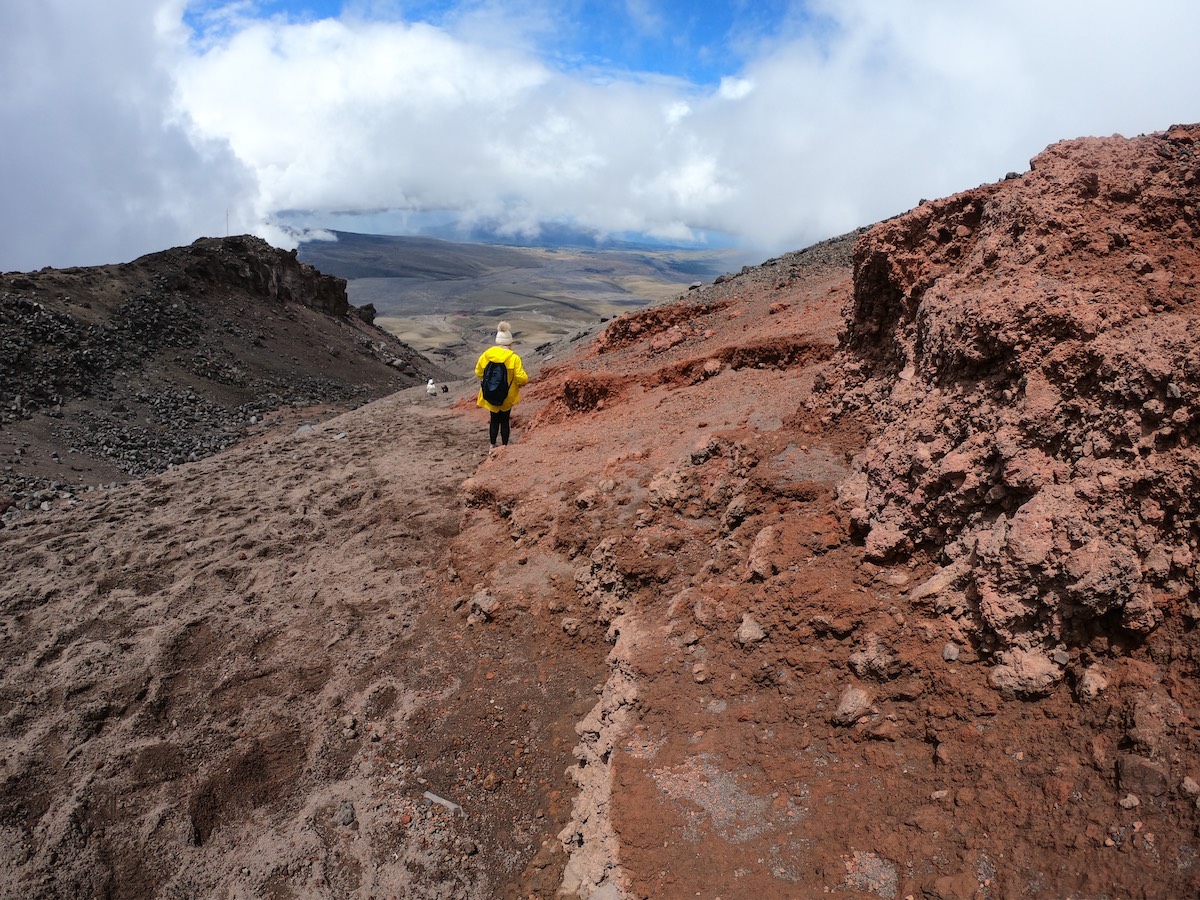
Reaching the Cotopaxi peak is no small feat. The initial ascent is an 80-minute trek to the mountain’s base, where there’s a rest area to prepare for the overnight climb. Most hikers begin the 6-hour climb around 12:30 a.m., aiming to reach the summit by sunrise, around 7:30 a.m. While not technically challenging, the climb is demanding due to the high elevation. Acclimatization is key, and it’s common for climbers to turn back if altitude issues arise. Only about half make it to the summit, so it’s a real test of both physical and mental endurance. However, there is no need to go all the way to the peak of Cotopaxi to enjoy the park.
There are three trails in Cotopaxi National Park, namely:
- Cotopaxi Trail
- Cerro Ruminahui Trail
- Laguna Limpiopungo Trail
Cotopaxi Trail
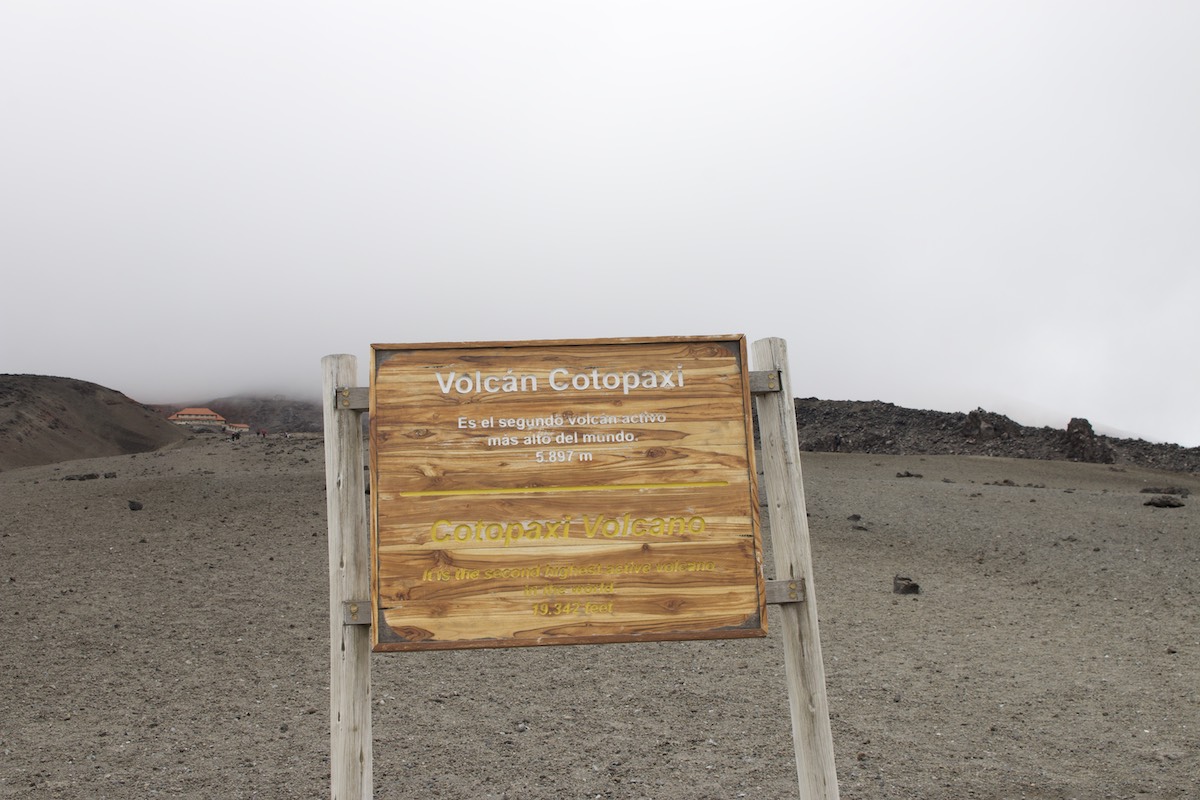
The Cotopaxi trail certainly earns its reputation as a challenging hike. With an elevation gain of 4,140 feet (1,261 meters) over a 4.5-mile (7.24 km) trek, it’s no easy climb.
The hike up to Cotopaxi was an adventure in itself—ridiculously beautiful yet completely unpredictable. In our case, the weather seemed to change every few minutes, as if we were hiking through a cloud timelapse. One moment, we were basking under the sun and applying sunscreen; the next, a thick fog would roll in, reducing visibility to practically nothing.
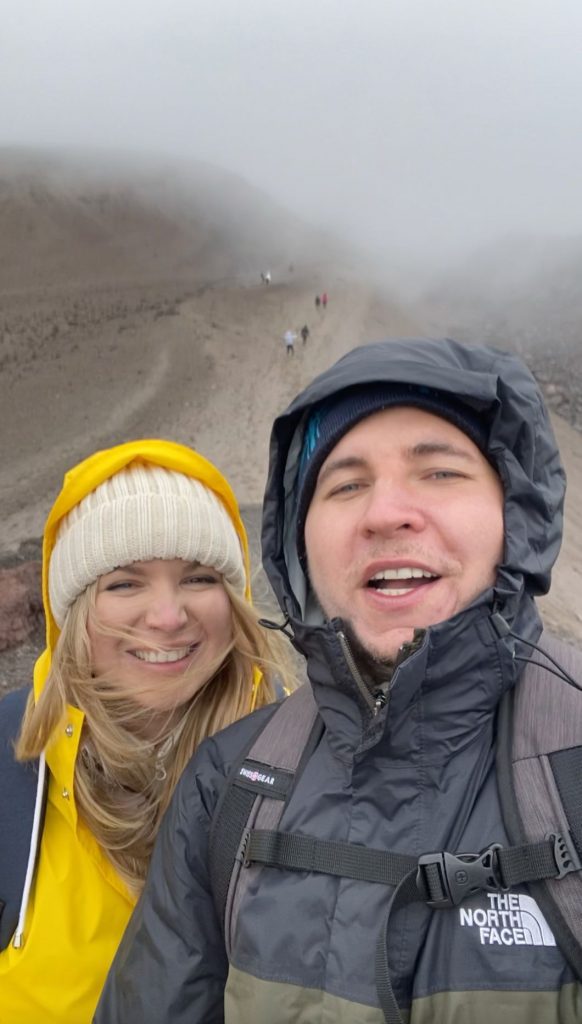
We faced extremes: from powerful gusts of wind that nearly knocked us off our feet to sudden moments of complete stillness. At times, a light drizzle would turn into a torrential downpour, only for the sun to reappear as if nothing had happened. It was like experiencing four seasons in one hike, making it feel all the more surreal. Every shift in weather revealed a different, mesmerizing side of the landscape, keeping us constantly on our toes—and making the journey that much more exhilarating.
The altitude makes the uphill journey strenuous, but the reward is that the return is entirely downhill, giving you a chance to enjoy the descent while soaking in the breathtaking scenery.

One of the things I loved most was watching the color scheme transform as we climbed higher. At the start, the landscape was dominated by shades of black and gray, almost like hiking through an otherworldly volcanic wasteland. But as we gained elevation, it began to shift slowly, with rich, rusty reds emerging from the rocks and soil.

It honestly felt like we were stepping onto Mars!
Have questions about your upcoming Galapagos trip? Join my Galapagos Reddit community and ask other travelers who recently visited the islands. Get up-to-date tips, real experiences, and honest advice from other travelers (I ban tour agencies and resellers).
Following the trail up the face of Cotopaxi to the Base Camp is an incredible experience. Many hikers opt for this route, stopping at Base Camp rather than continuing to the summit.
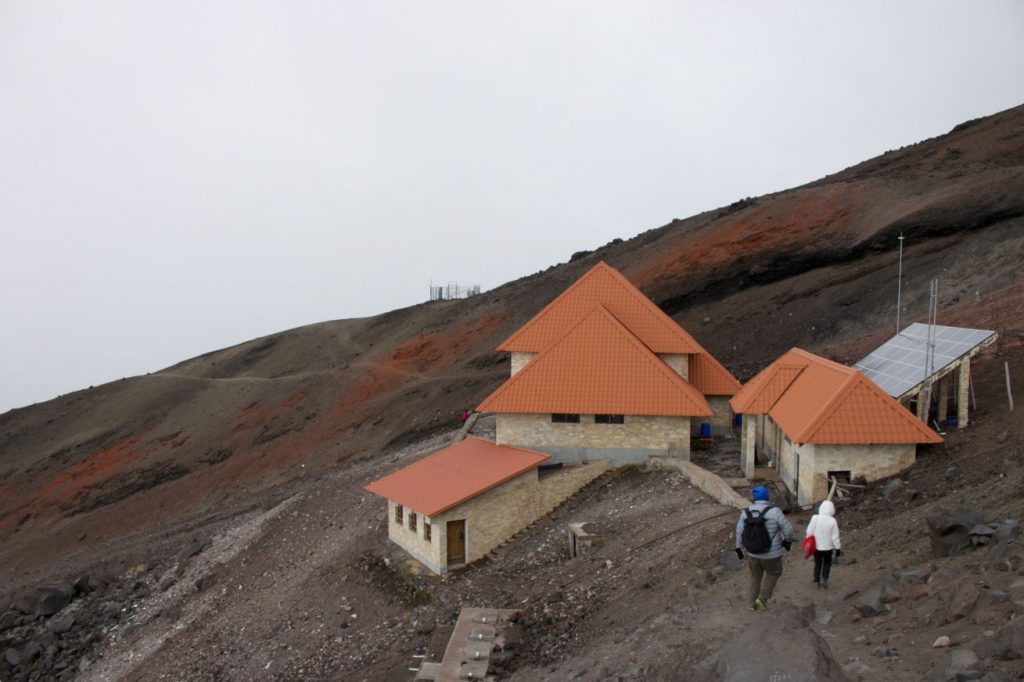
It’s a fantastic way to appreciate the mountain’s majestic beauty without the commitment of a full ascent, letting you take in sweeping views and the unique, rugged terrain that makes Cotopaxi so iconic.
Cerro Ruminahui Trail

Due to the rugged terrain and steep altitude gain, this trek presents quite a challenge, but the rewards are remarkable. The 7.1-mile (11.4 km) hike to the peak offers breathtaking, panoramic views of the landscapes below and a glimpse of a lake along the route. With a 2,828-foot elevation gain (862 m), it’s a strenuous journey but one that lets you fully immerse in Cotopaxi’s stunning natural beauty.
Laguna Limpiopungo Trail

The Laguna Limpiopungo trail is a gentle 1.6-mile (2.6-kilometer) loop around the lake, ideal for those looking to take in the scenery without a strenuous climb. Along the trail, you’ll be treated to beautiful views of Cotopaxi, and if you’re lucky, you might catch sight of migrating birds that frequent the lake. This peaceful walk provides a refreshing way to experience the park’s wildlife and natural beauty.
Unfortunately, we weren’t lucky enough to catch clear views of Cotopaxi itself—it stayed hidden behind a thick layer of fog the entire time. But even without that iconic volcano silhouette, we found the hike incredibly beautiful and scenic.
Honestly, if it was this stunning shrouded in fog, I can only imagine how breathtaking it must be on a clear day.
Trust me, tackling Cotopaxi’s altitude and unpredictable weather requires careful planning – I learned this firsthand! Skip the guesswork and get a FREE expert itinerary from my recommended local experts who know exactly how to prepare you for this adventure. Your booking supports this blog and local Ecuadorian communities
Where to Stay in Cotopaxi National Park
Camping
Camping in Cotopaxi National Park is a bit more restrictive now due to the volcano’s recent eruptions in 2015 and 2016. The park enforces camping bans whenever Cotopaxi shows signs of activity, so it’s essential to check with the park guides at the gate about which designated areas are open for camping. They can also inform you about any fees for staying overnight.
If you’re looking for more camping options close to the park, you might consider Hacienda El Porvenir and Hacienda Santa Rita, just a few kilometers north. Both offer camping facilities and a touch of local charm, making them excellent alternatives for a safe, comfortable overnight stay near the park.
Hotels and Lodges

If you’re planning on staying near Cotopaxi National Park, there are some fantastic places that we found add an extra layer to the adventure. The drive to these spots, with its winding, bumpy roads, was part of the excitement for us. Near the park’s south gate, we stayed at Hotel Cuello de Luna and also loved the rustic charm of Rondador Cotopaxi and Hacienda San Agustin de Callo. Each one had its own cozy character and a welcoming vibe that made us feel right at home.
For those exploring the north entrance near El Pedregal village, Chilcabamba Lodge and Secret Garden Cotopaxi are also solid picks – they’re warm, inviting, and close enough to make an early start in the park. Inside the park itself, Tambopaxi Lodge is a rare gem; it’s the only accommodation within the park’s boundaries, located right at the base of the Cotopaxi volcano. We didn’t stay there but loved the idea of being so close to the heart of Cotopaxi. Whether you’re looking for a cozy hacienda feel or want to experience the wilderness up close, these places make the journey to Cotopaxi even more memorable.
Plan perfect trip to Ecuador & Galapagos
I spent countless hours researching everything about traveling to Ecuador, and I created this blog for fellow travel enthusiasts who want the best, most reliable information. But if you want to save time, we’ve partnered with the top local agency to plan your dream trip.
Things to Do in Cotopaxi National Park
Explore the Perimeter of Laguna Limpiopungo

Laguna Limpiopungo is one of those spots in Cotopaxi National Park that truly brings the landscape to life, especially if you’re there during the rainy season when the lake is full. Walking along the 90-minute trail, we were able to spot breeding Andean gulls and even a few hummingbirds, which added a special charm to our hike. And if you’re lucky enough to get a clear day, the views of Cotopaxi rising in the distance over the lake are absolutely breathtaking. This was one of our favorite spots to pause, take in the scenery, and snap a few photos to capture the moment.
Hike to the Summit of Cotopaxi
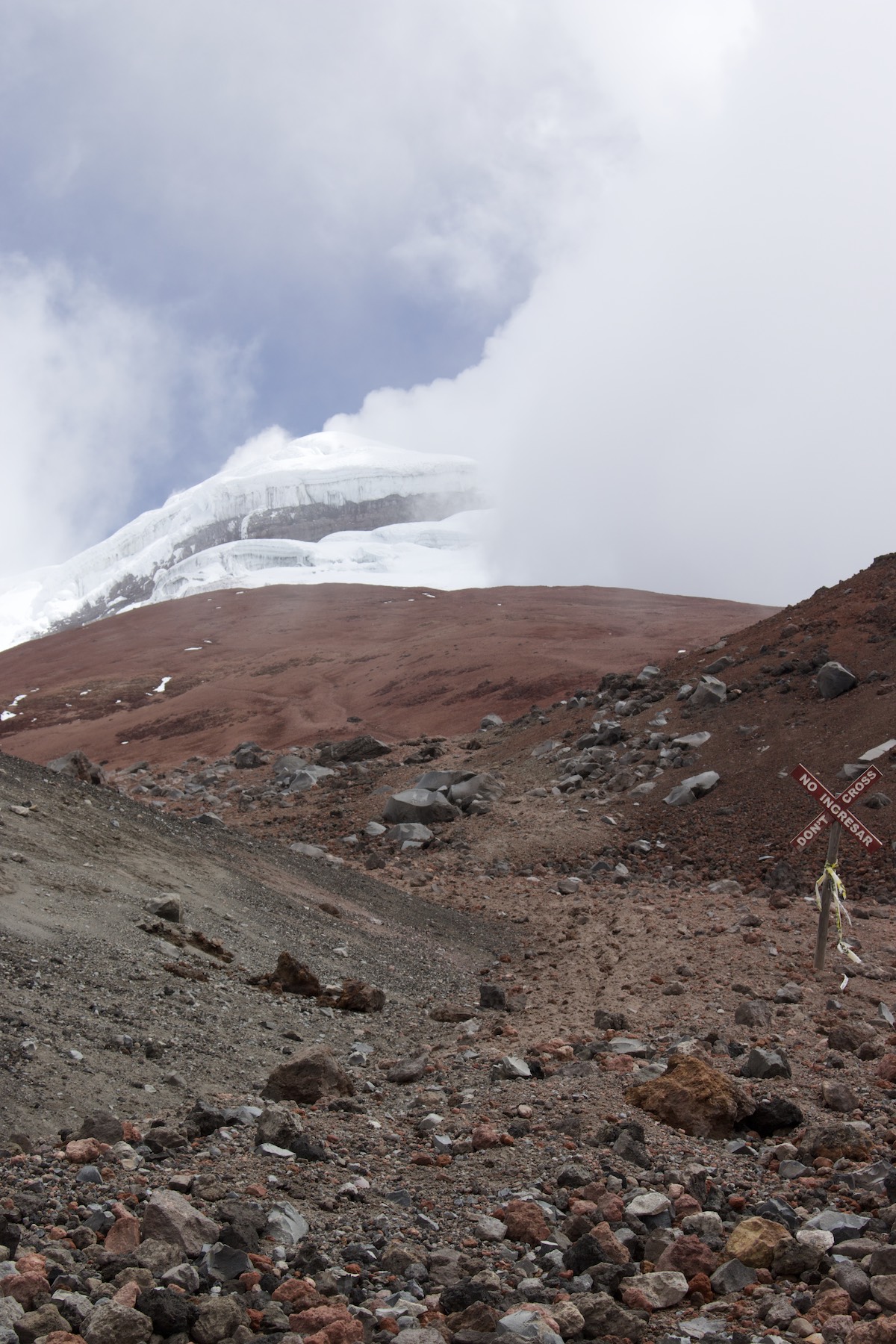
If you’re planning on hiking to the glacier or even tackling the peak of Cotopaxi, it’s good news that climbing activities have reopened since the two-year suspension after Cotopaxi’s eruption in August 2015.

However, make sure to check the current volcanic activity before you arrive, as access to the summit can still be restricted depending on the conditions. When we were there, it was safe to hike up to the glacier, but we kept an eye on updates just in case. The unpredictability adds a thrill, but it’s always best to prioritize safety when dealing with such powerful natural landscapes.

The ascent is challenging and demands proper acclimatization to the altitude. For those ready to go, several trails start from the José Ribas refuge, each offering unique perspectives of Cotopaxi’s rugged terrain. When we reached the refuge, we felt accomplished—just getting there was an adventure in itself!

Preparing for the trek means having the right equipment, layered clothing, and ideally going with a seasoned local guide. If the weather cooperates, reaching the summit promises incredible panoramic views, but even stopping at José Ribas gives you a real taste of the mountain’s splendor. Just look at that:

If you don’t want to hike to the top, just getting to the refuge at 4,800m (15,748ft) above sea level is an incredible experience.

Horseback Riding
The wild horses of Cotopaxi are often spotted grazing near the trail’s end, adding a touch of magic to the experience. We found that horseback riding here offers a more authentic way to explore the parklands, immersing ourselves in the local culture. Cotopaxi’s connection to the chagra tradition—Ecuadorian cowboys skilled in riding and sporting traditional ponchos—is something we could feel as we rode through the landscape.
If you’re up for it, there are options for varied lengths of rides at local haciendas like El Porvenir Cotopaxi. For those craving more adventure, the La Alegria horse farm even offers multi-day riding excursions, giving a real sense of exploration through these vast Andean parklands.
Mountain Biking

Mountain biking in Cotopaxi was one of our favorite adventures. We opted for this mountain biking tour starting at the José Ribas refuge trailhead, where we could bike down the winding, gravel route right from the mountain. It was exhilarating to take in the rugged scenery at such a fast pace!
Some tours also head to Laguna Limpiopungo, offering a chance to slow down and spot more wildlife along the way. Biking through Cotopaxi really felt like a more immersive experience, with chances to see the Ecuadorian hill star hummingbird, sporting its vibrant purple head and white chest, and the iconic wild horses that roam the park. For those looking to blend a bit of thrill with nature, mountain biking here is a must-do.
Spotting Wildlife

During our visit to Cotopaxi National Park, we were lucky enough to spot some of the more common wildlife like deer and Wild Horses of Cotopaxi grazing peacefully against the stunning backdrop. Llamas are also a regular sight, blending right into the mountain scenery.
Though we kept our eyes peeled, we didn’t encounter any of the park’s more elusive residents, like pumas, Andean bears, or the Andean fox. These shy animals tend to stay hidden, adding a bit of mystery to the park’s rugged landscape. Spotting them would be a rare and unforgettable experience, but even seeing the more common animals in such a beautiful, natural setting made the visit feel truly special.

While exploring the area around Limpiopungo Lake, we found it to be a birdwatcher’s paradise. Wading and coastal birds were abundant, and the bright orange Chuquiragua blossoms, known as the flower of the Andes, drew in colorful hummingbirds, flitting and hovering close enough to appreciate their delicate beauty.
Raptors like the Carunculated Caracara are also spotted throughout Cotopaxi, adding an unexpected thrill to the visit. And although we weren’t lucky enough to spot one, on rare and special days, you might even catch sight of an Andean Condor soaring above—a true bucket list moment for any nature lover.
Discover Plants and Nature

In Cotopaxi, it’s easy to feel a deep sense of connection to nature. The Andean Paramo habitat within the National Park might seem stark and rugged, but it reveals an array of resilient plant life if you pause to look closely.
The most common sight is the tough, straw-like grass that carpets the wide plains, a testament to the harsh conditions here. Among it, we found vibrant mosses and lichens clinging to rocks, and delicate Andean flowers adding surprising splashes of color. Each plant seems perfectly adapted to this high-altitude landscape, quietly thriving in one of nature’s most unforgiving environments.
Weather in Cotopaxi National Park

Weather in the high Andes, especially in Cotopaxi National Park, is famously unpredictable and always chilly. The average temperature hovers around 6 degrees Celsius, but at night, it can dip as low as -4.
When we hiked to the Cotopaxi volcano, we were reminded just how fast conditions can shift. One moment, the sun would peek out, warming us slightly, and the next, a cloud would sweep over, bringing a sudden chill. The weather truly kept us on our toes, adding a bit of thrill to the adventure!

When visiting Cotopaxi, brace yourself for a day of weather variety: you’ll likely experience everything from bright sunshine to a biting, chilly wind, with a good chance of rain or even the occasional icy hail. Although the forecast may sound intense, it’s this very climate that nurtures Cotopaxi’s unique plant and wildlife.
Thankfully, most of the lodgings around here have cozy open fires and thick ponchos, which made our evenings warm and comfortable. Those thoughtful touches definitely made the cold feel more welcoming and part of the experience.

Planning trip to Ecuador?
My wife and I rented a car for 15 days and traveled from the northern part of Ecuador to the south, visiting amazing cities like Quito, Otavalo, Baños, Cuenca, and Guayaquil. Along the way, we explored iconic places such as Cotopaxi National Park, Quilotoa Lake, and many more breathtaking destinations.
Not many blogs cover traveling in Ecuador in detail, so I spent nearly three weeks creating this comprehensive Ecuador travel guide based on our trip. It’s packed with everything you need to know, and honestly, I consider it the best free travel guide about Ecuador out there.
If you’re planning a trip to Ecuador, don’t forget to use my link for discounted hotel prices through Booking.com. It’s a great way to support my blog while saving money on your accommodations!
Travel Tips When Traveling to Cotopaxi
Traveling to Cotopaxi needs well preparation. So, we are sharing you some tips that will be helpful to you before your trip to Cotopaxi.
- Get to the park as early as possible to enhance your chances of seeing bright sky and stunning views of the volcano. It’s also preferable to go during regular week and avoid popular public holidays.
- Prepare your weather gear. Cold weather clothing, such as gloves and a wooly cap, as well as rain gear and thick layers, are suggested to keep the cold at bay. A nice pair of walking boots are also essential. Sunglasses and high-factor suncream are always necessary to avoid sunburn, even on cloudy days.
- Bring plenty of water and energy foods to keep you going during your tour.
- There is no admission cost, but visitors must register with a ranger at the park’s gate.
- To avoid the symptoms of altitude sickness, drink plenty of water. We also took ChlorOxygen two weeks before the trip which extremely helped us. Bring necessary medications that can help you in case of sickness.
- Bring your own snacks or enjoy a meal at the volcanic refuge house for lunch. Do not expect much for the meal, we paid for this $15:
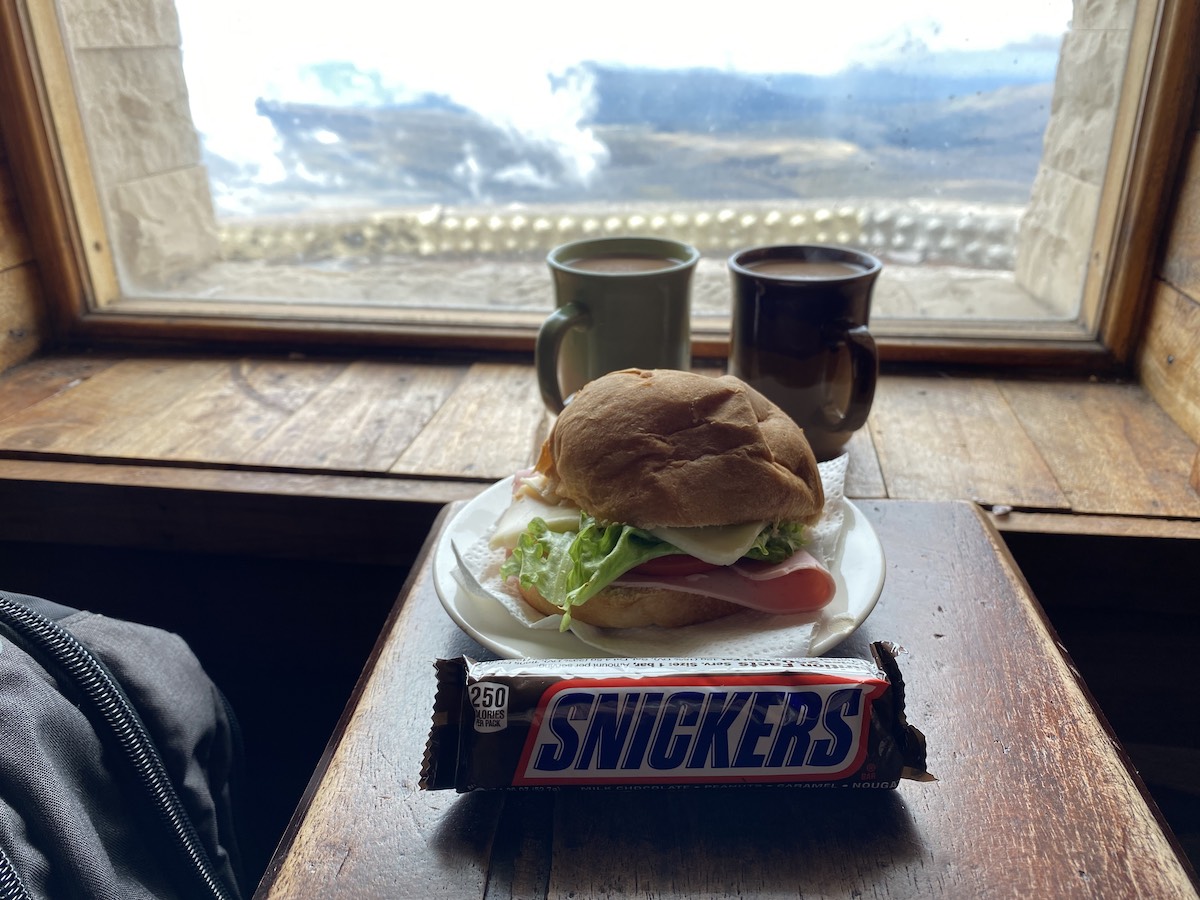
- Camping is permitted in the reserve, however, evenings are sometimes brutally cold.
- Pets are not allowed inside the park.
Remember, Cotopaxi National Park is a protected sanctuary, and the Ecuadorians work hard to keep its natural beauty intact. During our visit, we made sure to respect all park guidelines, from staying on designated trails to keeping our distance from wildlife. Following the rules not only preserves this stunning landscape for future visitors but also shows appreciation for the efforts of those who maintain its tranquility.
In my opinion, Cotopaxi National park is a must-visit place in Ecuador.
Plan perfect trip to Ecuador & Galapagos
I spent countless hours researching everything about traveling to Ecuador, and I created this blog for fellow travel enthusiasts who want the best, most reliable information. But if you want to save time, we’ve partnered with the top local agency to plan your dream trip.




Really intrigued by the idea of hiking up to the summit of Cotopaxi. I’ve never done anything quite like that before. Does anyone know what the difficulty level is like? Also, curious if the weather up there is super unpredictable. Thanks for sharing this Oleg Galeev, it’s really sparked my interest!
Hey EllieMae, the hike to Cotopaxi’s summit is definitely challenging, mostly due to the high altitude. It’s important to be well acclimated beforehand. Weather wise, yes, it can change quickly so preparation is key. Make sure you have the right gear!
Mountain biking in Cotopaxi sounds epic! Anyone tried it? Got tips?